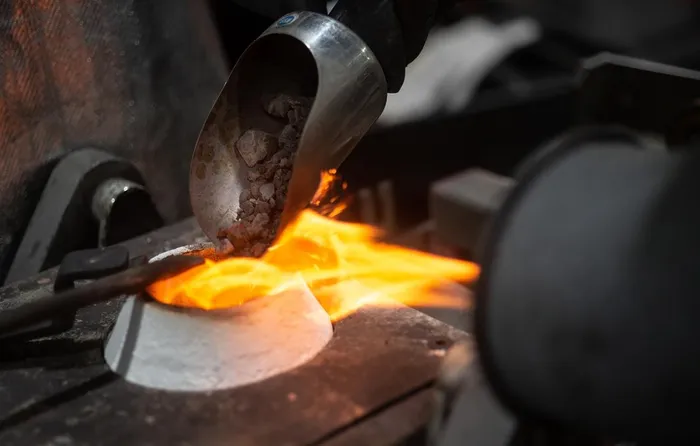Sibanye-Stillwater expands reach with R1.4bn Metallix acquisition
MINING

Metallix complements Sibanye-Stillwater’s US recycling operations in Montana and Pennsylvania, adding processing capacity, proprietary technology and extensive knowledge and experience.
Image: Supplied
Tawanda Karombo
Sibanye-Stillwater has made a strategic move by acquiring Metallix Refinery, a US-based precious metals recycler, for an impressive $82 million (just above R1.4 billion).
This acquisition is poised to not only strengthen Sibanye-Stillwater's foothold in the precious metals recycling market but also to drive additional revenue worth approximately R4bn, bolstering its financial performance as it navigates the complexities of the current market.
Bruce Williamson, mining analyst at Integral Asset Management, told Business Report on Monday that at spot refined prices, revenues from Metallix’s financial year ending 31 December 2024 production would likely top R4.2bn, which would be fairly significant for Sibanye-Stillwater.
“I think that it is strategic for the dominant SA platinum group metals (PGM) miners to maintain control over the +-30% of recycled material (and moreover) SA PGM miners are part of a small number of PGM refineries. The other benefit is that recycling gives Sibanye-Stillwater an important insight into the scrapped auto market,” said Williamson.
Shares in Sibanye-Stillwater rose 3.5% to R42.45 in response to the announcement of the transaction on the JSE on Monday. On the back of a resurging PGM prices, the company's stock has firmed up by 17.51% and 30.99% in the past seven and 30 days, respectively.
Sibanye-Stillwater described Metallix as a firm that produces recycled precious metals, including gold, silver and PGM, primarily from industrial waste streams.
The company operates two processing and recycling operations in Greenville, North Carolina and has a global customer base, which it services from the United Kingdom and South Korea, in addition to those in the US.
“Metallix complements Sibanye-Stillwater’s US recycling operations in Montana and Pennsylvania, adding processing capacity, proprietary technology and extensive knowledge and experience,” said Sibanye-Stillwater.
“The acquisition enhances the group’s global recycling reach and internal logistics capabilities, increasing its ability to source materials from multiple regions, facilitating the delivery of end-to-end solutions to customers.”
Sibanye-Stillwater expects the transaction to close during the third quarter of 2025, subject to receipt of applicable regulatory approvals customary to a transaction of this nature.
Williamson said the acquisition was “a strategic, standalone PGM decision”.
It, however, comes at a time when Sibanye-Stillwater’s Kloof and Driefontein gold operations “are getting to the stage where ensuring enough monthly mill feed is a challenge” despite elevated gold prices.
“Hopefully, the high rand gold price gives them a window to complete development at Burnstone and get into production,” said Williamson.
Sibanye-Stillwater CEO, Neal Froneman, is however chuffed up about reaching agreement to acquire Metallix.
“We are excited to be adding Metallix to our existing recycling footprint – the scale, technology and know-how adds positively to our existing recycling operations and advances our urban mining strategy. We expect significant value uplift through the large number of synergies with our existing recycling operations,” said Froneman.
For the year to December, Metallix processed approximately 4.2 million pounds of precious metals bearing waste materials and produced approximately 21 000 ounces of gold, 874 000 ounces of silver, 48 000 ounces of palladium, 48 000 ounces of platinum, 4 000 ounces of rhodium, 3 000 ounces of iridium and 263 000 pounds of copper.
According to Williamson, recycling accounts for about 30% of supply but excludes inventory from investment/ETFs that is coming back into the market.
He explained that Sibanye-Stillwater was “large enough to trade through commodity up and down” cycles as has happened in the past few months.
“There are times as experienced late last year and during the first five months of 2025 when recycling is not profitable and the flow of spent autocats dry up,” he said.
BUSINESS REPORT